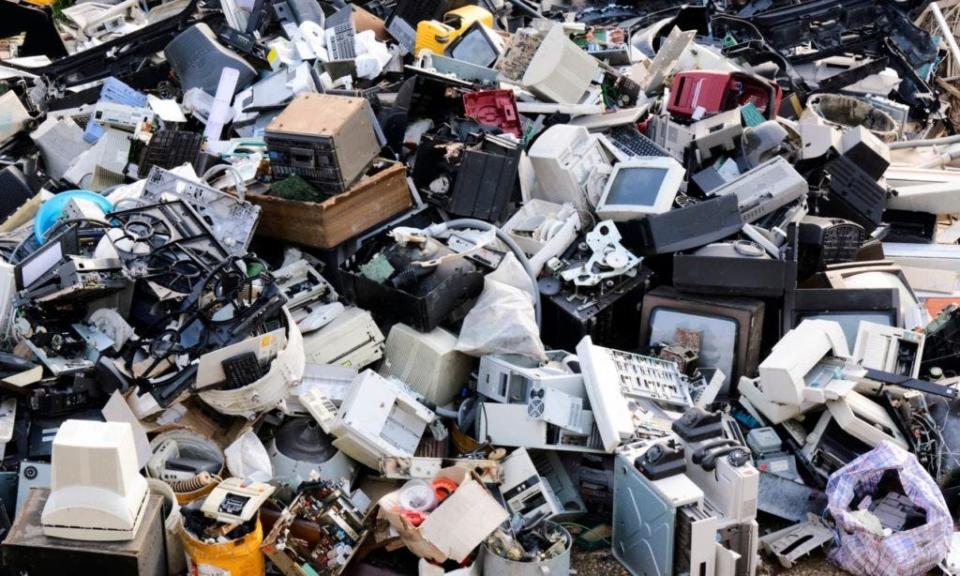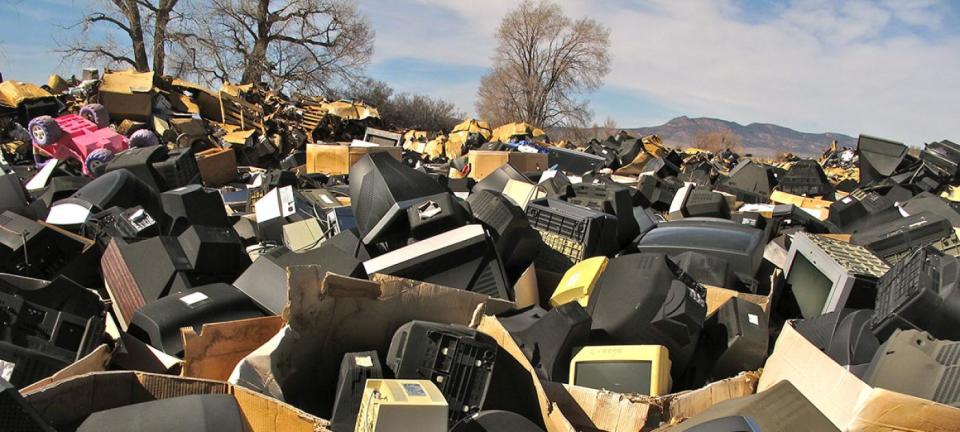Old iPhones, PCs and printers: How to recycle or dump e-waste
There’s one obvious downside to our increasing reliance on technology: electronic waste.
E-waste refers to discarded rather than recycled electronic equipment accumulating in landfills each year – a record 53.6 million metric tons of it worldwide in 2019 – according to the latest United Nations Global E-waste Monitor report.
To put that into perspective, that weighs more than all the commercial airliners ever made.
And the problem is getting worse, according to the report, which cites a 21% increase over the past five years, and – unless we can curb e-waste – it is expected to swell to 74 million metric tons by 2030.

With 6.9 million metric tons, the United States was the second-biggest contributor to e-waste in 2019, behind China (10.1 million metric tons) and ahead of India (3.2 million metric tons).
Why recycle: e-waste and the environment
The problem, of course, is that consumer electronics contain toxic substances such as cadmium, lead, mercury, beryllium, polyvinyl chloride, or PVC and brominated flame retardants, or BFRs, to name a few of the nasty ones, and this toxic runoff poisons our soil, water and ecosystems.

Plus, proper e-waste management can help mitigate global warming. For example, an estimated 98 million metric tons of carbon dioxide equivalents were released into the atmosphere from discarded refrigerators and air conditioners in 2019, the report says, contributing about 0.3% of all global greenhouse gas emissions.
That, and when the recovered resources from our electronics go back into the manufacturing supply chain, it lessens our reliance on new materials – thus reducing the need to mine these resources fresh from the earth (often referred to as “primary production”) – which in turn leads to a reduction in greenhouse gas emissions.
Fun fact: Recovering aluminum from recycled electronics uses roughly 90% less energy than that required for primary production.
What you can do with your old tech
You know the old adage: If you can’t reuse, recycle.
It’s always better to hand down tech to those who could use it, whether it’s to a family member or friend, or donated to a community center, school, or church. But assuming it’s time to ditch it, you’ll want to properly recycle.
After all, you may be spring-cleaning your home this time of year, so it’s a great time to properly dispose of unwanted tech items.
The Environmental Protection Agency’s website lists several ways to donate or recycle electronics.
You can see all the options on where to bring in your larger tech items (like computers and printers) at various drop-off locations across the country, including big-box retailers, and such.
Smaller items like smartphones could also be dropped off, in most cases, or can be traded in or mailed through programs offered by mobile phone carriers.
There will be a few differences among states, so be sure to research the details.

Don’t forget to remove your data
It’s important to properly remove data from your digital devices before you recycle them – just in case it falls into the wrong hands.
For computers, there is free downloadable software that can properly erase your hard drive. Sometimes referred to as “shredding” a drive, these tools, like Eraser and CBL Data Shredder, can comb through every sector to clear all your data. The process can take a while, so wait it out.
Some people physically destroy hard drives before recycling an old computer, such as taking a drill or hammer to it, but you don’t want to physically hurt yourself in the process. Good software should do the trick.
Or keep just the hard drive and, with the aid of an inexpensive enclosure kit, turn that old internal drive into an external drive that can be plugged into your existing PC or Mac.

As for smartphones and tablets, the good news is iOS and Android devices support encryption, so opting for a “restore” or “factory reset” should be fine (it will say something like “Erase All Content and Settings?)”
Or use reliable third-party software to do the job on an Android device.
Follow Marc on Twitter for his “Tech Tips of the Day” posts: @marc_saltzman. Email him or subscribe to his Tech It Out podcast at marcsaltzman.com/podcasts.
The views and opinions expressed in this column are the author’s and do not necessarily reflect those of USA TODAY.
Share your story: We're game to hear about what you play
From Animal Crossing to Zoom calls: What is the 'metaverse' and are we ready?
This article originally appeared on USA TODAY: Old iPhone or laptop? How to recycle electronic devices

